Course Appetizers or entrees Serving temperature Hot | Region Tibet | |
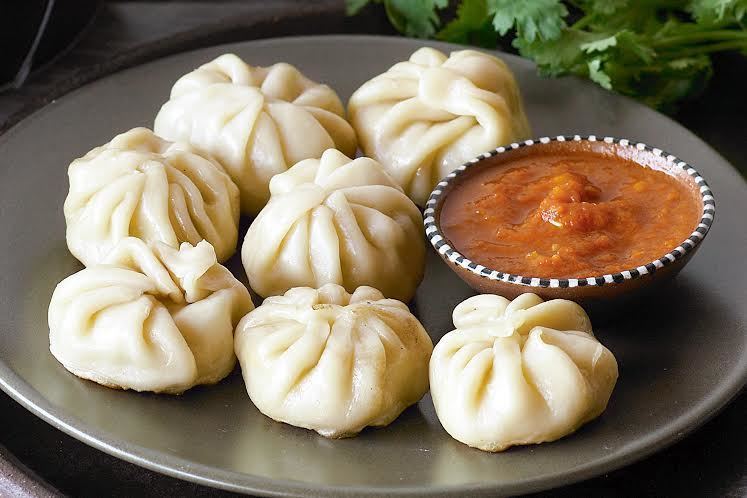 | ||
Region or state Nepal, Tibet, Bhutan, Sikkim Created by Tibetan diaspora in South Asia or Himalayan Newar merchants Variations Steam-momo, Kothey momo, C-momo, Fry-momo, Open-momo Food energy
(per serving) 350 to 1000 (35 to 100 per piece) kcal Place of origin India, Nepal, Tibet, Bhutan Main ingredients White flour, Vegetables or chicken Similar Chicken Thighs, Thukpa, Samosa, Paneer, Mantou | ||
Momo (Nepali: मम; Nepal Bhasa: ममचा, मम:; Tibetan: མོག་མོག་, Wylie: mog mog; simplified Chinese: 馍馍; traditional Chinese: 饃饃; pinyin: mómo) is a type of South Asian dumpling; native to Tibet, Nepal, Bhutan, Sikkim.It is similar to Chinese baozi and jiaozi, Mongolian buuz, Japanese gyoza and Korean mandu.
Contents
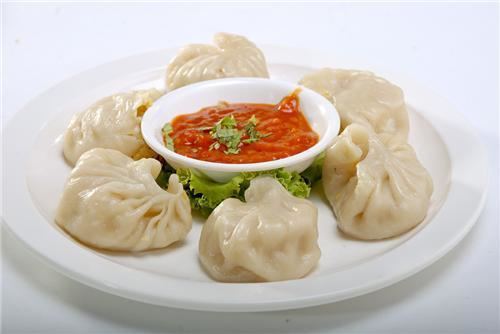
History

The dish is believed to be of Tibetan origin and since then has spread to other neighboring countries with the influx of Tibetan diaspora. Since this dish was initially popular among the Newar community of the Kathmandu Valley, one prevalent belief is that traveling Newar merchants brought the recipe and the name momo from Tibet where the Newar Merchants use go to trade. They modified the seasonings of the dish with available ingredients, such as water buffalo, and kept the same name.
Description
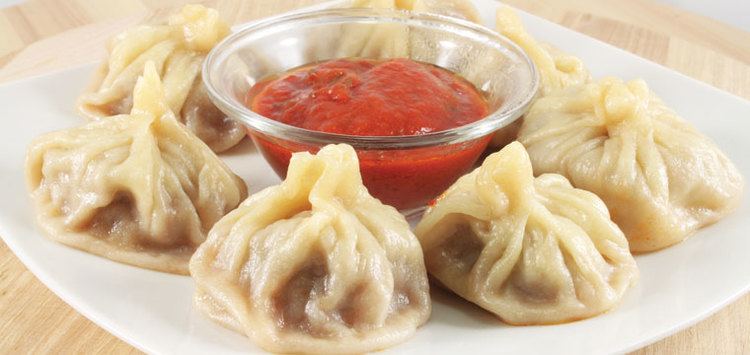
Momo is a type of steamed bun with some form of filling. Momo has become a traditional delicacy in Nepal, Tibet and among Nepalese/Tibetan communities in Bhutan, as well as Sikkim state and Darjeeling district of India. It is one of the most popular fast foods in Nepal. Momos have also spread to other countries like United States (some parts), UK and India.
Production
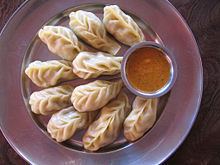
A simple white-flour-and-water dough is generally preferred to make the outer momo covering. Sometimes, a little yeast or baking soda is added to give a more doughy texture to the finished product. Monosodium glutamate (MSG) is also used sometimes to enhance the taste of momo.
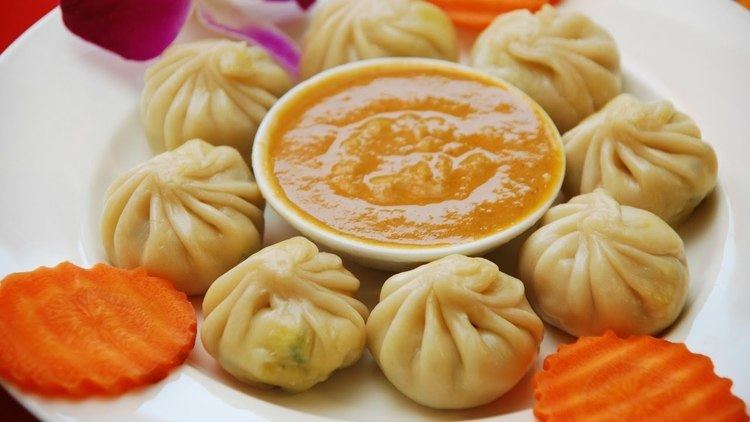
Traditionally, momo is prepared with ground/minced meat filling, but over the past several years, this has changed and the fillings have become more elaborate. These days, momo is prepared with virtually any combination of ground meat, vegetables, tofu, paneer cheese, soft chhurpi (local hard cheese) and vegetable and meat combinations.
The dough is rolled into small circular flat pieces. The filling is then enclosed in the circular dough cover either in a round pocket or in a half-moon or crescent shape. People prefer meat that has a lot of fat because it produces intensively flavored juicy momos. A little oil is sometimes added to the lean ground/minced meat to keep the filling moist and juicy. The dumplings are then cooked by steaming over a soup (either a stock based on bones or vegetables) in a momo-making utensil called mucktoo. The dumplings may also be pan-fried or deep-fried after being steamed.
Varieties
There are typically two types of momo, steamed and fried. Momo is usually served with a dipping sauce (locally called chutney/achhar), normally made with tomato as the base ingredient. Soup momo is a dish with steamed momo immersed in a meat broth. Pan-fried momo is also known as kothey momo. Steamed momo served in hot sauce is called C-momo. There are also a variety of Tibetan momos, including tingmo and thaipo.
